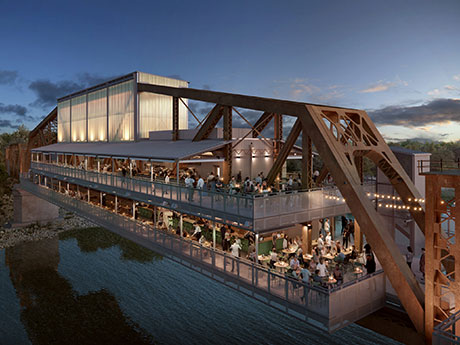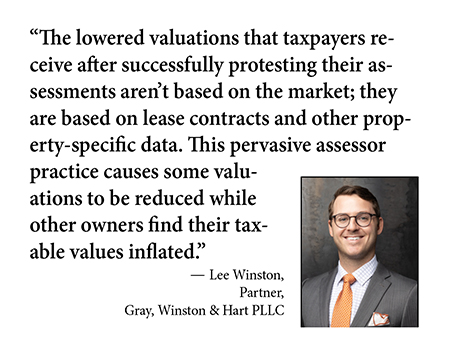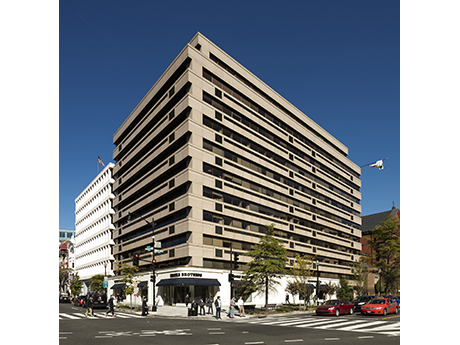This year, multifamily housing starts nationally are on pace to hit their lowest levels since 2014, a period marked by the national economy’s gradual recovery from the Great Financial Crisis. Year to date, multifamily deliveries have exceeded starts by 218,500 units, creating a substantial shortfall that signals a significantly reduced apartment supply by 2026. The same trend is taking effect in Raleigh-Durham, where completions exceeded starts by 4,935 units. This is a key consideration for most apartment investment strategies today, explaining why many buyers are willing to accept Year 1 challenges such as softness or negative leverage. As the current supply wave peaks in the Triangle, the future pipeline of multifamily construction is shaping up quite different. Of the identified units that are scheduled for delivery in 2024, nearly 42 percent of units have been delivered as of this writing. Of the approximately 18,600 apartments currently under construction across the Triangle, 13,343 of those are expected to be delivered by the end of third-quarter 2025, with a majority in Central and Southeast Raleigh. However, new activity has slowed significantly — inventory growth by 2027 is projected to drop by more than 85 percent, plummeting to a 3.6 percent rate compared …
Market Reports
— By Giovanna Abraham, Market Intelligence Analyst, Avison Young — The Las Vegas office market continues to defy broader national trends, maintaining resilience and attracting attention for its stability and growth. While many U.S. cities struggle with rising office vacancies, Las Vegas stands out for its comparatively low vacancy rate, steady rent growth and positive return-to-office trends. Despite recent increases in vacancy, Las Vegas remains well below national averages, with a vacancy rate of 15.2 percent in the third quarter — 850 basis points lower than the national availability rate of 23.7 percent. This performance reflects the unique dynamics shaping the Las Vegas office market, including a steadily growing population and the city’s appeal as a business-friendly destination. Low Vacancy Rates and a Stable MarketOffice vacancy has gradually increased over the past six quarters, but Las Vegas has also experienced a much slower rise than many larger metropolitan markets. This measured growth has allowed the city to remain competitive, with vacancies rebounding to pre-pandemic levels by late 2021 and holding steady through first-quarter 2023. After brief upticks in the first half of 2024, the vacancy rate declined again by third-quarter 2024, dropping from 15.9 percent to 15.2 percent. This resilience …
By Maya Khan, managing director, CBIZ Between the pandemic and the advent of hybrid work, it’s been a challenging stretch for the New York City office market. But savvy investors see skies clearing as interest rates come down and more employers call workers back to the office. The stabilizing market also offers new opportunities for office-to-residential conversions, thanks to recently enacted state and city incentives. In fact, office buildings sold for such purposes accounted for 50 percent of all development sales in Manhattan in the first half of 2024, according to data from Ariel Property Advisors. In what follows, we’ll take a deeper dive into those trends and look at how some New York real estate leaders who spoke at CBIZ’s “Manhattan to Main Street” panel are taking advantage of the current environment. The event, held in the fall of 2024, focused on the trillions of dollars in commercial real estate debt that is set to mature before 2028 and broader economic factors influencing the New York real estate market; it drew 85 attendees from the local real estate community. Opportunity on the Upswing It’s no secret that the Big Apple’s office sector has taken a beating in the past …
By Garrett Cohoon, Block & Co. Inc. Realtors The commercial real estate activity in the Kansas City metropolitan area showed substantial growth in 2024 for the retail, multifamily and industrial sectors. The office sector is still seeing record vacancy rates, but the annual loss over 2023 is slowing down. According to CoStar, the office vacancy rate for 2024 is up 11.8 percent in Kansas City while the national index is at a 13.9 percent increase. That’s only 0.5 percent higher than last year in Kansas City and we expect to see that trend turn around in the next year. The retail sector saw new brands like Aritzia grow into the Kansas City market. Whataburger opened its 14th location in the past two years as drive-thru restaurants have continued to be a preference for consumers and investors alike. Wellness-based businesses and health clinics have also made good strides in the market. Kansas City has seen an increase in new experiential attractions this year, including national businesses like Puttery minigolf, Andretti indoor karting and SandBox VR. These new attractions have been key to many new development complexes and redevelopments of existing strip centers. Mattel also announced a new adventure park to be …
By William McDonough, vice president, Weitzman San Antonio’s retail market is reporting record-high occupancy as it continues its longest-ever streak of balanced supply and demand. With a new high of 95.2 percent, the Alamo City retail market has now posted healthy occupancy rates of 90 percent or higher for 14 years straight. The occupancy rate is based on Weitzman’s review of a total San Antonio retail inventory of approximately 49 million square feet of retail space in multi-tenant shopping centers with 25,000 square feet or more. Occupancy remains high due to stable tenant retention and strong demand for well-located vacancies. For example, shortly after Conn’s announced in mid-2024 that it planned to close its area stores, discount apparel retailer Burlington announced its plans to backfill three of the nine stores slated for closure. The market is also reporting an increase in new construction, but the deliveries overall have actually increased occupancy due to the fact that they are primarily for anchor stores and largely preleased shop space. Last year, the market did see new vacancies created due to the chain-wide failures of Conn’s, Big Lots, American Freight Furniture and 99 Cents Only. But in a tight market like San Antonio’s, …
— By Roy Fritz, First Vice President, CBRE Retail Investment Properties – West — Las Vegas’s retail investment market continues to hit the jackpot, mirroring the lucky winners that visit the city every week. The Valley remains a magnet for growth, attracting new investors who would never have considered Las Vegas in the past. High-profile recent additions like the state-of-the-art, 70,000-seat Allegiant Stadium, Formula 1 Las Vegas Grand Prix race, MSG Sphere and the Fontainebleau luxury resort and casino have retailers and investors drawn to the city’s bright lights as they seek out that next big win. Major League Baseball is also making its mark in Las Vegas with the Oakland Athletics’ planned move to the city. The new stadium, set to open in 2028, will feature a 33,000-seat capacity and state-of-the-art amenities. It will also further cement Las Vegas as a premier sports and entertainment destination. This growth is supported by strong underlying fundamentals and economic diversification. The sentiment across the Valley’s business landscape is that the area has clearly transitioned from a tertiary market, which was highly dependent on Southern California capital just a few years ago, to a solid secondary market. This transformation has attracted investments from all …
In the summer of 2012, fresh out of college and starting my career in retail brokerage at KLNB, a seasoned retail broker-turned-developer warned me to consider other careers. “Retail is dying,” he said. “Why would people go to stores when it’s so easy to order online?” Well, it’s been 12 years since that moment, and I’m still waiting for the retail boogeyman to appear. As I write this, I’m happy to report he hasn’t arrived — and the data suggests he’s nowhere in sight. The Washington, D.C., metropolitan statistical area (MSA) is now in its tightest fundamental position on record due to limited new supply and continued demand from national, regional and franchised concepts. In the Washington, D.C. market, we have the second-lowest retail square footage per capita among major MSAs, with new retail supply representing just 0.4 percent of total inventory. This places the Capital Region in the bottom quartile of retail real estate inventory growth among national MSAs that have more than 100 million square feet of existing inventory. The result? Retail availability in the D.C. metro has decreased to 4.8 percent (compared to the national average of 4.7 percent), down from 5.1 percent year-over-year and 5.3 percent …
By Lee Winston, partner at Gray, Winston & Hart PLLC No income tax in Texas. The Texas Constitution prohibits it, so local funding depends primarily on property taxes. But to many Texas businesses, this “necessary evil” has become just plain evil. Over the last several years, property taxes in Texas have exploded. State politicians have taken notice and are ramping up demands to reduce or eliminate property taxes, but the alternatives are more than unpopular. For instance, nobody wants to pay — and no politician wants to stand for election on — instituting a near 20 percent sales tax. And everyone knows this. To avoid this reality, lawmakers have pivoted to find a villain, and the appraisal districts that place the taxable value on property are a ready target. The popular solutions to rein in this villain are appraisal caps, increased exemptions and value limitations, all of which offer relief to residential property owners but do little for commercial owners. And these “fixes” result in a system that is neither equal nor uniform, undermining the constitutional foundation of taxation in Texas. Our elected officials have yet to address the fundamental issue driving the over-valuation of most commercial properties, which is …
— By Amy Ogden, Partner, Industrial, LOGIC Commercial Real Estate — With the presidential election barely in our rearview mirror, many are taking a moment to assess how the outcome might impact (positively or negatively) their operations. On the one hand, this has been a resilient year for Las Vegas’ industrial market, which tracked close to 4.5 million square feet of net absorption. On the other hand, we are beginning to see a slowdown in momentum. The uncertainty of potential changes has left decision-makers hesitant, preferring to avoid any premature moves until after the holiday season. Nevertheless, the market is far from idle. The recent rate cut of 50 basis points, along with expectations of an additional reduction at the upcoming November meeting , has set a quiet hum of activity in motion. Investors and key players are discreetly exploring opportunities, positioning themselves strategically for when the time is right to act. Local industrial vacancy rates have also jump to about 7 percent as an influx of new deliveries come online. Vacancy rates are projected to hit double digits, considering an additional 4 million square feet is expected to deliver by year’s end. This is something we haven’t seen within …
The Washington, D.C., office market is facing challenging times, marked by unprecedented vacancy rates, dwindling demand and a significant supply-demand imbalance. Within these constraints, the flight to quality trend is reshaping how investors and lenders view office assets and should lead to an inventory reclassification. The divide between high-quality assets and lesser properties widens almost daily, creating a bifurcated market with fierce competition for quality space. Meanwhile, older, less desirable properties languish, accumulating vacancies as they fail to meet current occupier expectations. Without intervention, the less desirable properties will continue to drag down the market’s perception, obscuring the success of top-tier spaces with a headline vacancy rate. To contribute to the stabilization of the market, office participants must acknowledge this divide and assess distressed assets not as liabilities, but as opportunities to reset and reclassify properties based on realistic usage and demand. Lenders are central to this process as they control a substantial portion of distressed office stock. After years of extending loans to stave off foreclosure during uncertain times, many are now realizing that relief is unlikely to materialize organically. As a result, foreclosures are already up 121 percent in 2024 year-to-date over 2023 in Washington, D.C. On average, …







